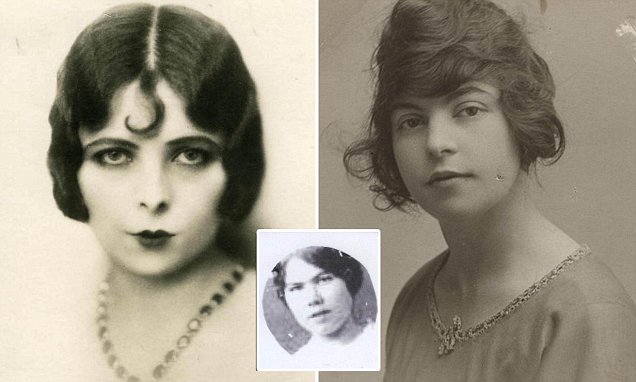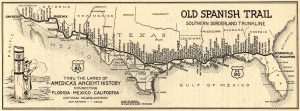The year was 1862, a time when thievery ran rampant in London’s lower class families, when women had little to no rights, and when men held the reins of society. Men ran social, economic, and political structures, but they also ran the underbelly of London. One of the most prominent gangs of London was the Elephant and Castle gang, an all-male gang that ran a complex system of robberies, kidnappings, and murder. At the same time, Mary Carr was born. Carr, born of a poor woman by the name of Jane Carr, and her husband, a notorious international thief and forger of bonds, John Carr, who led a life of crime. By 1881, Carr was already a notorious thief, with convictions starting as early as 1876 at the age of fourteen.1 With the help of the Elephant and Castle Gang, Mary Carr started the Forty Elephants, becoming their first queen due to her infamy for “fencing” or selling stolen property and pulling off successful heists. Though Carr was their first queen, the gang’s first public appearance was in an article from 1873, but some say the all female gang had been around since the 1700’s.2 Carr continued her career, changing her name several times along the way, including to Molly Mayne and Polly Carr. By 1903, she was notorious internationally, with a police report back in 1900 identifying her as the notorious Polly Carr, one of the most dangerous women in the London metropolis and Queen of the Forty Thieves (interchangeable name for Forty Elephants). Carr ran the Forty Thieves on and off between prison sentences until her suspected death in 1924.3 Carr successfully organized the Forty Elephants, but she started something else. She started the idea of a woman becoming a hoister, a person who stole and sold goods. Hoisters were becoming a lifestyle and profession for women who were locked out of the social lime light, but now could show off their skill and wealth. Becoming a hoister also meant breaking the social status of women since, with their new found wealth, they could become independent and support themselves. Unlike thieves and shoplifters, hoisters were known as professionals who were able to evade arrest and carry different aliases. Women who joined the hoister status unfortunately typically joined due to dire economic circumstances, since most shoplifters came from working and middle class families.4

After the death of Mary Carr came another Queen, Alice Diamond. Just like the former Queen, she also carried aliases, including Dolly Blake and Alice Blake.5 Born in Southwark, South London in 1886, Alice, just like Carr before her, was born to criminal parents. By seventeen, Alice already had a criminal record from thievery and was using a false identity even then. By the 1920’s, gangs plagued London and soon Alice’s record, just like Carr’s, got the attention of the Elephant and Castle Gang. Having just lost their previous Queen, the Elephant and Castle Gang eagerly accepted Alice as the next Queen. At 5 foot 8 inches, Alice was formidable and usually wore diamond rings that were used as impromptu brass knuckles during fights. After several fights with police, she was known as Diamond Annie.6 Unlike their counterparts, the Elephant and Castle Gang, Alice continued Carr’s work through the use of organized cells through various parts of London and later across Great Britain.

For women shoppers, most shops offered privacy to them when shopping. Alice, taking full advantage of that privacy, created special clothing for the women that led to the largest systematic shoplifting the country had ever seen. The clothing, lined with specially tailored pockets and multiple layers of cloth to hide goods between knickers, allowed Alice and her gang to launch several highly successful raids on London’s most elegant businesses.7 The creativity and boldness of the clothing ranged from false arms hanging out of long coats to large bags hanging underneath dresses. One nineteen-year-old thief caught in Bayswater, West London, had a bag made of Alpaca fur suspended at her waist that hung all the way down to her knees. When caught, police discovered forty-five stolen items inside.8 Alice ran the gang with precision and excellent timing. If their presence became too well known to police, Alice would order another cell in another city to take on more heists. Along with heists, many of the women would work as housemaids with credentials that usually mentioned other women. These women would ransack the home, or seduce the man into paying them for their silence.9 With the invention of the automobile, getting away became easier for the thieves. Once they pillaged stores or homes, the thieves would use (at the time) high powered automobiles to outrun police. Police documents show that even if the alleged thief was caught, the goods were not located within the vehicle. The reason for that was that the goods had already been relocated to another member of the gang (sometimes a male member) before or even during the escape. The goods would then be taken mostly by train, usually through an empty suitcase. The suitcases would be deposited around railroad stations, which would then be filled with the goods and shipped to “fences.”10 A “fence” was slang for someone who received and sold stolen goods. The goods, worth thousands of pounds, would sometimes end up in the hands of one of the most notorious fences, Ada Macdonald. MacDonald lived in a house in Walworth, South-East London and was the subject of many police raids. Each time, the authorities couldn’t locate any of the stolen goods.11
Just like other gangs at the time, Alice and the Forty Elephants guarded their territory ferociously. If a thief who was not part of their gang stole from a shop on their turf, a percentage was demanded from the thief, by an amount that depended on how much that thief stole. Those who refused were kidnapped, beaten, and subjected to ransoming. Along with demanding respect from other thieves, a list of codes known as the “hoister’s code” applied to all members of the gangs. The codes ranged from “No drinking before a raid, and early hours to bed” to “If a member is arrested others must be willing to provide an allibi.”12 Though the women were vicious, they were known to have an extravagant life. As Alice put it, they would “put on the posh,” meaning that they would dress and act of a higher social status. Combined with acting of a higher status, the Forty Elephants would host lavish parties, spend enormous amounts of money in pubs, clubs, and restaurants, fitting the 1920’s narrative of the aristocratic flapper with Alice at the forefront.13

Most members of the gang, being excellent hoisters, rarely got caught in the act. One notorious member, however, was caught. Her name was Maggie Hughes. In 1923, she had stolen a tray containing thirty-four diamond rings. While running out of the store, she ran straight into the arms of a police officer. On December 20, 1925, Alice’s rule came to an end after she and Hughes incited a riot against a former member of the Forty Elephants. Alice was jailed for eighteen months while Hughes was jailed for five.14

By the time of Alice’s release, another thief by the name of Lillian Rose Kendall had taken over the gang. Seeing how energetic, young, and creative Kendall was, she handed her position over to Kendall. Kendall, nicknamed the “Bobbed Hair Bandit” because of her short fringe and side curls, was a daring driver specializing in smash and grabs. On several occasions, Kendall used her car as a way to smash into store fronts such as Cartier’s on Bond Street.15
After Alice left the gang, their power and influence began to slip away. Hughes, being one of the more brazen of the group, was officially out of the gang by 1938. With Hughes gone and many more powerful members dead or imprisoned, the gang began to wither away.16 By the 1950’s, store security had increased and the ability to hide more items limited, due to change in clothing style, leaving less profit for the gang. By then, most members left to the countryside where smaller businesses were easier targets, but with improving economic conditions, new members were scarce leaving the Forty Elephants all but a romanticized legend. As for Alice, after leaving the gang, she founded a brothel in Lambeth, passing on tips to future shoplifters and members of the Forty Elephants. During WWII, Alice refused to leave London during evacuations. She later contracted Multiple Sclerosis and die at the age of 55 in 1952.17
- Brian McDonald, Alice Diamond and the Forty Elephants: Britain’s First Female Crime syndicate (Berkshire: Milo Books, 2015), 64-65. ↵
- Amelia Hill, “Girl Gang’s grip on London underworld revealed,” The Guardian, December 27, 2010. Accessed March 12, 2018. https://www.theguardian.com/books/2010/dec/27/girl-gang-london-underworld. ↵
- Brian McDonald, Alice Diamond and the Forty Elephants: Britain’s First Female Crime syndicate (Berkshire: Milo Books, 2015), 66, 68-69. ↵
- William M. Meier, “Going on the Hoist: Women, Work, and Shoplifting in London, ca. 1890-1940,” Journal of British Studies 50, No. 2 (April 2011): 411, 427. ↵
- Brian McDonald, Alice Diamond and the Forty Elephants: Britain’s First Female Crime syndicate (Berkshire: Milo Books, 2015), 116. ↵
- Guy Walters, “Hoodlums in bloomers: The female army of shoplifters that ransacked West End shops and hid loot in their knickerbockers,” Daily Mail, January 20, 2011. Accessed March 12, 2018. http://www.dailymail.co.uk/femail/article-1342450/Female-shoplifters-ransacked-West-End-shops-hid-loot-knickerbockers.html. ↵
- Guy Walters, “Hoodlums in bloomers: The female army of shoplifters that ransacked West End shops and hid loot in their knickerbockers,” Daily Mail, January 20, 2011. Accessed March 12, 2018. http://www.dailymail.co.uk/femail/article-1342450/Female-shoplifters-ransacked-West-End-shops-hid-loot-knickerbockers.html. ↵
- Brian McDonald, “Such very seductive shoplifters: Stuffing loot into their bloomers, how a ruthless girl gang spread havoc across London-flirting with victims or battering them with diamond-ring knuckle-dusters,” The Daily Mail, December 18, 2015. Accessed March 12, 2018. http://www.dailymail.co.uk/news/article-3366655/Such-seductive-shoplifters-Stuffing-loot-bloomers-ruthless-girl-gang-spread-havoc-London-flirting-victims-battering-diamond-ring-knuckle-dusters.html. ↵
- Kirsten Miller, “The Ultimate Girl Gang,” Old Police Cells Museum, January 25, 2018. Accessed March 12, 2018. http://www.oldpolicecellsmuseum.org.uk/content/learning/bad-girls/victorian-girl-gangs. ↵
- Kirsten Miller, “The Ultimate Girl Gang,” Old Police Cells Museum, January 25, 2018. Accessed March 12, 2018. http://www.oldpolicecellsmuseum.org.uk/content/learning/bad-girls/victorian-girl-gangs. ↵
- Guy Walters, “Hoodlums in bloomers: The female army of shoplifters that ransacked West End shops and hid loot in their knickerbockers,” Daily Mail, January 20, 2011. Accessed March 12, 2018. http://www.dailymail.co.uk/femail/article-1342450/Female-shoplifters-ransacked-West-End-shops-hid-loot-knickerbockers.html. ↵
- Brian McDonald, Alice Diamond and the Forty Elephants: Britain’s First Female Crime syndicate (Berkshire: Milo Books, 2015), 135. ↵
- Brian McDonald, “Such very seductive shoplifters: Stuffing loot into their bloomers, how a ruthless girl gang spread havoc across London-flirting with victims or battering them with diamond-ring knuckle-dusters,” The Daily Mail, December 18, 2015. Accessed March 12, 2018. http://www.dailymail.co.uk/news/article-3366655/Such-seductive-shoplifters-Stuffing-loot-bloomers-ruthless-girl-gang-spread-havoc-London-flirting-victims-battering-diamond-ring-knuckle-dusters.html. ↵
- Guy Walters, “Hoodlums in bloomers: The female army of shoplifters that ransacked West End shops and hid loot in their knickerbockers,” Daily Mail, January 20, 2011. Accessed March 12, 2018. http://www.dailymail.co.uk/femail/article-1342450/Female-shoplifters-ransacked-West-End-shops-hid-loot-knickerbockers.html. ↵
- Brian McDonald, “Such very seductive shoplifters: Stuffing loot into their bloomers, how a ruthless girl gang spread havoc across London-flirting with victims or battering them with diamond-ring knuckle-dusters,” The Daily Mail, December 18, 2015. Accessed March 12, 2018. http://www.dailymail.co.uk/news/article-3366655/Such-seductive-shoplifters-Stuffing-loot-bloomers-ruthless-girl-gang-spread-havoc-London-flirting-victims-battering-diamond-ring-knuckle-dusters.html. ↵
- Guy Walters, “Hoodlums in bloomers: The female army of shoplifters that ransacked West End shops and hid loot in their knickerbockers,” Daily Mail, January 20, 2011. Accessed March 12, 2018. http://www.dailymail.co.uk/femail/article-1342450/Female-shoplifters-ransacked-West-End-shops-hid-loot-knickerbockers.html. ↵
- Brian McDonald, “Such very seductive shoplifters: Stuffing loot into their bloomers, how a ruthless girl gang spread havoc across London-flirting with victims or battering them with diamond-ring knuckle-dusters,” The Daily Mail, December 18, 2015. Accessed March 12, 2018. http://www.dailymail.co.uk/news/article-3366655/Such-seductive-shoplifters-Stuffing-loot-bloomers-ruthless-girl-gang-spread-havoc-London-flirting-victims-battering-diamond-ring-knuckle-dusters.html. ↵



74 comments
Mohammed Hani Shaik
Great title and very well done research has resulted in an amazing article to read! These women are only famous because of their choice to lead a lifestyle of thievery. However, that choice came out of desperation or need for a better life or a higher social status. This in turn served as a role model for women and turned out to be revolutionary as women began to believe that they too could live a good life.
Juliana Montoya
This article was very informative on the fact that there was a female gang back then especially since it was not very common. They were extremely powerful and obviously knew exactly what they were doing when it came to criminal stuff. The information that the article provided was very informative and well written.
Andrea Degollado
First off, the title for this article is great and is what made me read this article. This article was very interesting to read. i think it was interesting how creative the women got and how they found different tactics to help them shoplift and were able to steal about 45 items in just a run to the store. Although these women wouldn’t serve as the best role models its interesting to read how they had each others backs and had rules to follow. Great article.
Joanna Martinez
The topic of this article is very unique and well-written. I enjoyed the back story of the roles of women and the changes that occurred in their status to society. It is funny as well as interesting to learn about how women would steal and most importantly how they were able to use their environments in order to achieve their ultimate goal. Although these women we not necessarily great role models, they were also able to illustrate how women could do all of the things that men could do including becoming gangsters.
Priscilla Poorbaugh
I love the title of this article, it’s kind of empowering. When you say gangster, most typically think of men. Although I don’t support all the things they did, I still for some reason reading this article made feel empowered, just because these women did what was known to be only for men. Given her circumstances, she did what she had to do to prove herself.
Amelia Hew
Despite them being one of the most powerful and notorious gang during the 19th century, I can’t help but admire their cunningness and strength. It also sparks my imaginations on how the gang works at that period and its interesting to know that the gang was run by a woman since most woman of that time were left with little to no rights. These women are strong if not stronger then men of that period, they are capable of gaining financial independence and don’t have to rely on men to support themselves. It is also awesome to think about that they took full advantage of the clothing to steel the goods.
Alicia Guzman
This article really caught my eye because I had never really seen too many stories with women being the known criminals. While I have never really heard of this it does not diminish the ability of women and the idea that women could be “gangstas” does not shock me. I just have never heard of female “gangstas”. If any anything I think that females are much more inept when it comes to crime because people never really expect it coming. Overall, the power and influence that these female gangsters had over their crime rings are not shocking at all.
Danniella Villarreal
This article was amazing. The title caught my attention real quick and the pictures are so good. Knowing that women would use their dresses to steal things from stores was shocking, like why haven’t I thought of that? I loved reading about how things were in a different time. I am also proud to see women step up and take advantage of their situation. It is also the first time I’ve heard of a gang that has had all women.
Nadia Carrasco
This article immediately caught my attention from the title! I knew it was going to a great read. Turns out this article was very powerful I really enjoyed reading about women being the people to pull off these huge heists and cause all of this trouble. This just proved that they truly can do anything a man can do, against what the majority would say. This is a story that defied all odds and really kept me on my toes through it all. I would recommend this article to everyone, it is a must read!!
Tala Owens
This article was wild from start to finish. It is honestly astounding what these all women gangs were able to pull off for years. I was so shocked and kind of amused when I read that they used dresses and other altered clothing to steal. The fact that they were able to hide forty five items in just one of those pockets is so amazing. It was truly something else to read about women taking advantage of their situation and using it for their own benefit. Great article!